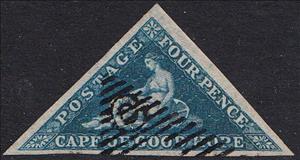Stamp: Allegory of Hope (Cape of Good Hope 1853)
Allegory of Hope (Cape of Good Hope 1853)
01 September (Cape of Good Hope ) within release Allegory of Hope goes into circulation Stamp Allegory of Hope face value 4 South African penny
| Stamp Allegory of Hope in catalogues | |
|---|---|
| Michel: | Mi: ZA-CA 2Ixb |
| Stamp Number: | Sn: ZA-CA 2b |
| Stanley Gibbons: | Sg: ZA-CA 4a |
Stamp is square format.
Stamp Allegory of Hope it reflects the thematic directions:
Myth is a genre of folklore consisting primarily of narratives that play a fundamental role in a society. For scholars, this is very different from the vernacular usage of the term "myth" that refers to a belief that is not true. Instead, the veracity of a myth is not a defining criterion
The Kionga Triangle (German: Kionga-Dreieck, Portuguese: Triângulo de Quionga) was a small region of German East Africa situated at the mouth of the Ruvuma River. The Ruvuma served as the border between the German colony and Portuguese Mozambique, and the Kionga Triangle was the only section of German East Africa south of the river. Its principal settlement was Kionga (now Quionga ) which had a population of 4,000 in 1910. It became a German possession in 1894 but came under Portuguese control in April 1916 during World War I. The post-war Treaty of Versailles reaffirmed that the river was the border between Tanganyika, then under British control, and Portuguese Mozambique. The triangle was the only territory that the treaty awarded to Portugal.

